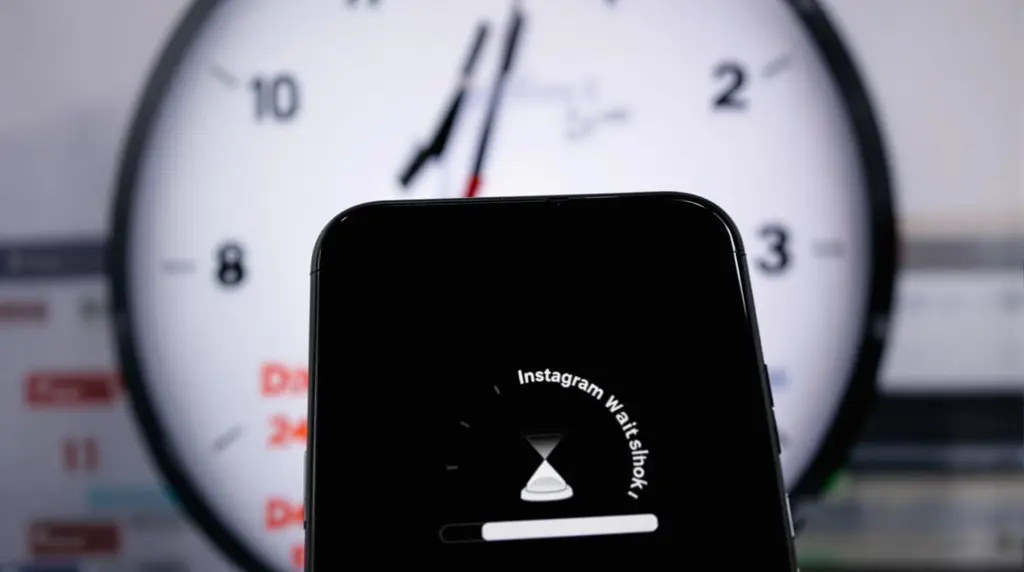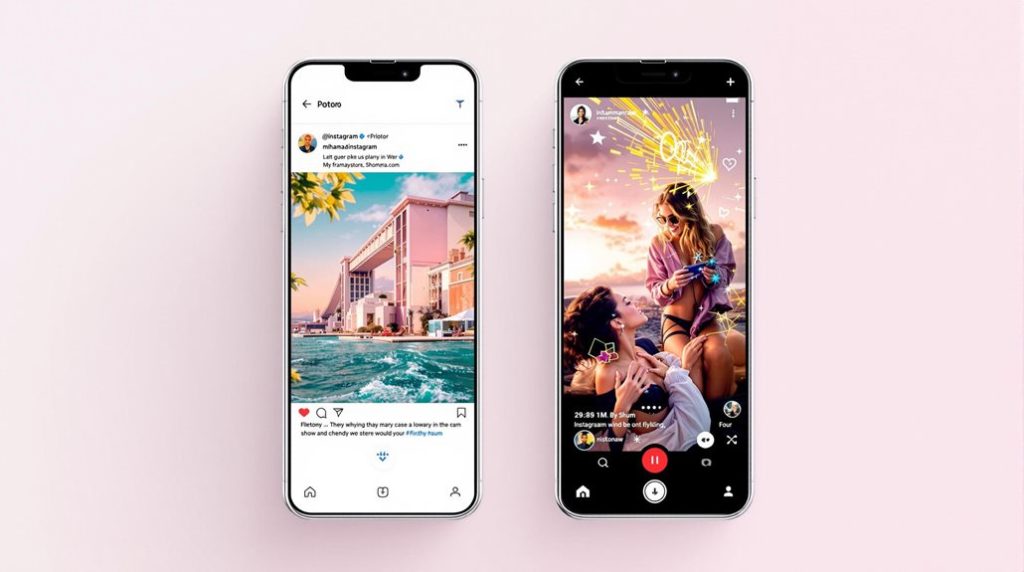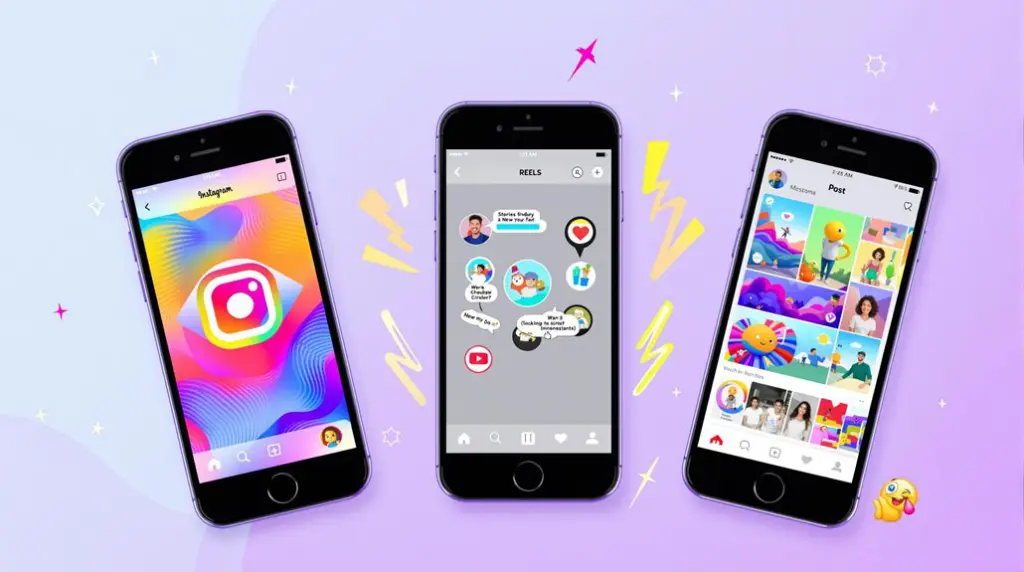In influencer marketing, success stories abound. Kettle & Fire earned $4 for every $1 spent on their visually appealing Facebook Ads and influencer collaborations. Iceland Foods saw a 55% retention rate on Facebook videos by using content from 50 micro-influencers, fostering genuine engagement. Warby Parker expanded their reach by integrating their glasses into influencers' everyday lives, enhancing brand trust. Health-Ade highlighted kombucha flavors through health influencers, boosting reach and community engagement. Dyson showcased product innovation with influencers, which increased brand credibility and consumer trust. Dive into these case studies to uncover more secrets of their success.
Key Takeaways
- Kettle & Fire saw a $4 return on every $1 spent by repurposing influencer content for Facebook Ads.
- Iceland Foods increased social media engagement by partnering with 50 micro-influencers, replacing celebrity endorsements.
- Warby Parker gained trust and expanded their audience by integrating their glasses into influencers' everyday life scenarios.
- Health-Ade built a community around their kombucha through collaborations with health and wellness influencers, driving engagement with high-quality Instagram posts.
- Dyson boosted brand credibility and consumer trust by showcasing their innovative technology through influencers that matched their target demographic.
Kettle & Fire Campaign
Kettle & Fire's influencer marketing campaign generated an impressive $4 revenue return for every $1 spent on Facebook Ads. By establishing strategic influencer partnerships, they secured that the content created was both visually appealing and aligned with their brand's image.
High-resolution Instagram posts from influencers were carefully curated, reflecting the brand's commitment to quality and authenticity.
In their ROI analysis, it became clear that these influencer-generated images played a vital role. Kettle & Fire didn't stop at Instagram; they repurposed these high-quality visuals for their Facebook Ads, which greatly boosted the campaign's effectiveness. This approach not only maximized the content's reach but also reinforced brand alignment across multiple platforms.
The key takeaway here is how effectively Kettle & Fire leveraged influencer partnerships to drive impressive returns. By focusing on content curation and ensuring that all visuals resonated with their brand ethos, they managed to create a cohesive and impactful campaign.
This case study underscores the power of influencer marketing in generating significant ROI when executed with precision and strategic alignment. If you're looking to enhance your brand's presence, consider how influencer partnerships and meticulous content curation can work together to achieve remarkable results.
Iceland Foods Success
Building on the impressive returns seen in the Kettle & Fire campaign, Iceland Foods achieved a remarkable 55% retention rate on Facebook videos and a 70% approval rating increase by shifting from celebrity endorsements to partnering with 50 micro-influencers. This strategic pivot allowed the brand to create authentic, user-generated content that resonated more deeply with their audience.
Engaging micro-influencers led to a surge in social media engagement, as these influencers cultivated trust and relatability with their followers. Unlike celebrity endorsements, micro-influencers' content felt more genuine and accessible, driving higher retention rates and boosting approval ratings. By leveraging the power of micro-influencers, Iceland Foods not only maintained viewer interest but also strengthened their brand perception.
The user-generated content produced through these partnerships showcased real-life experiences and honest reviews, making it highly shareable and relatable. This approach fostered a sense of community and loyalty among consumers, further enhancing social media engagement. The campaign's success highlights the effectiveness of influencer marketing in building meaningful connections with audiences and driving long-term brand loyalty.
In essence, Iceland Foods' shift to micro-influencers and user-generated content proved to be a game-changer, significantly impacting audience retention and overall brand approval.
Warby Parker Strategy
Warby Parker's influencer campaign achieved significant ROI by showcasing their glasses in everyday life scenarios, expanding their audience, and positioning the brand as a lifestyle choice. By collaborating with influencers, Warby Parker effectively conveyed the brand's values and style to a broader audience.
Here's how they did it:
- Everyday Life Scenarios: Influencers wore Warby Parker glasses in various daily activities, making the brand relatable and accessible.
- Audience Expansion: By leveraging influencers' followings, Warby Parker reached potential customers who mightn't have been aware of the brand otherwise.
- Lifestyle Integration: The campaign positioned Warby Parker glasses as an essential part of a stylish, modern lifestyle, aligning with consumers' aspirations.
- Enhanced Engagement: Influencers' personal endorsements increased engagement and trust, driving more meaningful interactions with the brand.
Warby Parker's strategic approach to brand positioning and lifestyle integration through influencer partnerships highlights the importance of relatable and authentic content. By selecting influencers whose personal brands aligned with their own, Warby Parker ensured that their message resonated deeply with audiences.
This approach not only boosted brand awareness but also fostered a sense of community among users, ultimately leading to higher engagement and conversion rates.
Health-Ade Case Study
How did Health-Ade leverage influencer marketing to enhance their kombucha brand and captivate a niche market? They formed strategic influencer collaborations to highlight the unique flavors of their kombucha. Influencers, who focused on health and wellness, emphasized the quality and appeal of Health-Ade, effectively aligning their content with the brand image.
High-resolution Instagram posts served as the cornerstone of their content creation strategies. These posts resonated with their audience, driving engagement and extending their reach. Influencers created visually appealing content that showcased Health-Ade's variety, from Pink Lady Apple to Ginger-Lemon.
Health-Ade also repurposed curated images from these influencers in Facebook Ads, enhancing campaign effectiveness to a great extent. This multi-platform approach wasn't just about visibility; it was about building a community around a niche product.
Here's how their approach evoked emotion:
| Influencer Collaboration | Engagement Tactics | Brand Image |
|---|---|---|
| Unique flavor showcases | High-res Instagram posts | Quality and appeal |
| Health-focused influencers | Curated Facebook Ads | Aligned with wellness |
| Visually appealing content | Multi-platform strategy | Community building |
| Effective repurposing | Increased reach | Consistent messaging |
Through strategic influencer collaborations and innovative engagement tactics, Health-Ade not only enhanced their brand image but also effectively captivated a niche market.
Dyson Influencer Tactics
Dyson's shift to influencer marketing has significantly increased brand engagement by showcasing their innovative technology through trusted voices. By leveraging influencer partnerships, Dyson effectively demonstrated the features and benefits of their products, boosting consumer trust and brand credibility. This strategy involved engaging influencers who aligned with Dyson's brand values and had a strong social media presence.
To understand Dyson's successful influencer tactics, consider these key elements:
- Targeted Collaborations: Dyson chose influencers whose audience matched their target demographic, ensuring maximum relevance and impact.
- Authentic Content: Influencers were encouraged to create genuine, relatable content that highlighted Dyson's innovative technology and sleek design.
- Platform Utilization: Dyson maximized their presence across various social media platforms to reach a broader audience and enhance brand promotion.
- Performance Tracking: Dyson monitored engagement metrics to refine their influencer partnerships and engagement strategies continually.
This approach not only amplified Dyson's online presence but also led to a significant boost in sales. By focusing on authentic and strategic influencer collaborations, Dyson successfully shifted from traditional advertising to a more engaging and credible form of brand promotion. This case study underscores the power of influencer marketing in driving brand success in today's digital age.
Frequently Asked Questions
How Do You Measure the ROI of an Influencer Marketing Campaign?
To measure the ROI of an influencer marketing campaign, you should track engagement metrics like likes, shares, and comments. Additionally, use conversion tracking to monitor sales, sign-ups, or other key actions driven by the campaign.
What Are the Best Platforms for Influencer Marketing?
The best platforms for influencer marketing include Instagram, YouTube, and TikTok. However, don't overlook niche platforms like Pinterest and emerging trends on Twitch or Clubhouse, which offer targeted audiences and high engagement rates.
How Do You Select the Right Influencers for Your Brand?
To select the right influencers for your brand, focus on audience fit and content alignment. Analyze their followers' demographics and engagement rates. Make sure their content style and values resonate with your brand's message for maximum impact.
What Are Common Mistakes to Avoid in Influencer Marketing?
Avoid inauthentic messaging and misaligned values. Guarantee your influencers genuinely align with your brand's mission. Data shows campaigns with authentic partnerships see a 20% higher engagement rate and stronger brand loyalty. Authenticity is key.
How Do You Ensure Authenticity in Influencer Partnerships?
To guarantee authenticity in influencer partnerships, conduct thorough authenticity checks and maintain partnership transparency. Vet influencers' engagement metrics, audience demographics, and past content. Communicate openly about expectations and values to build genuine, trustworthy relationships with your audience.
Conclusion
You've seen how brands like Kettle & Fire, Iceland Foods, Warby Parker, Health-Ade, and Dyson have harnessed influencer marketing to drive impressive results.
By aligning with the right influencers, leveraging authentic content, and measuring success through data-driven insights, your brand can achieve similar success.
Don't underestimate the power of influencer marketing—it's a proven strategy that can enhance your brand, engage your audience, and ultimately boost your bottom line.
Now, it's your turn to implement these tactics!




